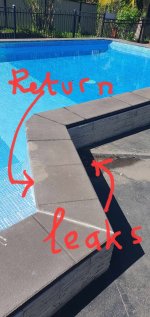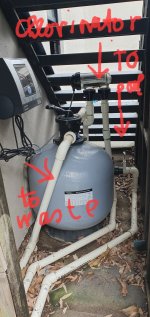- Mar 17, 2024
- 72
- Pool Size
- 55000
- Surface
- Plaster
- Chlorine
- Salt Water Generator
- SWG Type
- Astral Viron V25
Hi, I'm wondering if anyone has experience or opinion on pipe relining / no trench pipe repair, to fix leak in suply pipe? There are some older forums about this in TFP, may be there are more to discus since then.
...The leak started small about 5-6 months ago when noticed damp area on the concrete pavers at the back of return pipe when the pump was on. No apparent water loss then. A few months later water constantly emerged from below the concrete paving even when the pump was off. Obvious water loss, water drop about 30mm/ month. Return Pipe size is around 30 to 35mm, definitely not 50mm.
A leak detector told me the leak was inside the pool concrete wall and quoted $ 6k-7k to repair a traditional way by digging and cut the concrete.
There is one company who could reline this size pipe and quoted $3.5k
Anyone can recommend someone to repair in Sydney area ? All inputs are highly appreciated, thanks all!
...The leak started small about 5-6 months ago when noticed damp area on the concrete pavers at the back of return pipe when the pump was on. No apparent water loss then. A few months later water constantly emerged from below the concrete paving even when the pump was off. Obvious water loss, water drop about 30mm/ month. Return Pipe size is around 30 to 35mm, definitely not 50mm.
A leak detector told me the leak was inside the pool concrete wall and quoted $ 6k-7k to repair a traditional way by digging and cut the concrete.
There is one company who could reline this size pipe and quoted $3.5k
Anyone can recommend someone to repair in Sydney area ? All inputs are highly appreciated, thanks all!
Attachments
Last edited:






